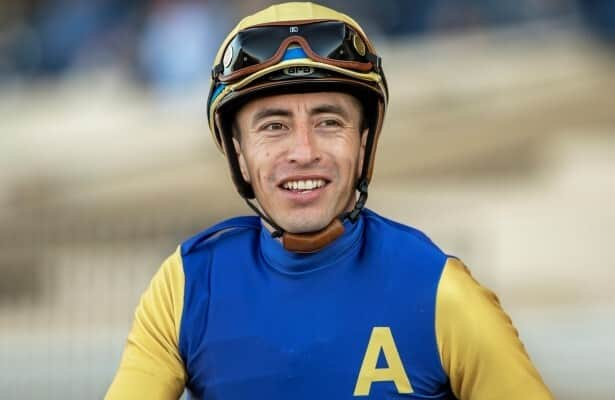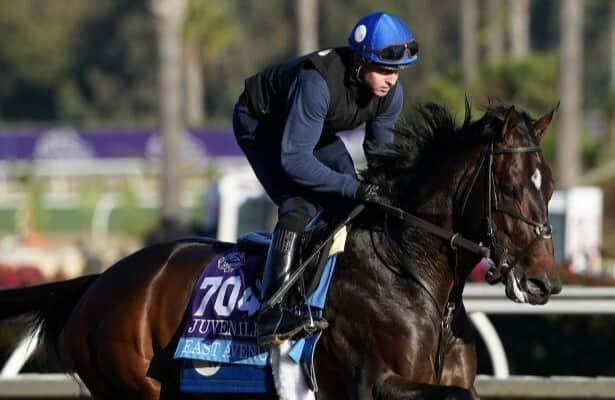Pro-Racing Journalist: “One fact you can’t escape is that horses will die in racing, despite all efforts.”

I have always held a special disdain for racing fans who, doubling as journalists, are gifted tremendous forums for spewing their deceptions, and thus are extremely influential in the court of public opinion. Exhibit A has always been Joe Drape of The New York Times. A close second for a long time was the LA Times’ John Cherwa. But with the latter, I’ve noticed a gradual shift over the past few years – indicating, perhaps, a growing internal conflict on his long-beloved sport. Last Friday, Cherwa wrote a column ahead of the Breeders’ Cup (BC). In the piece, Cherwa starts with the premise that rules implemented after the Santa Anita spring of ’19 made California racing safer. But, admits Cherwa:
“Without the intense public and media scrutiny, it’s unclear what safety improvements would have been implemented. In a tragic sort of way, without the crisis, the sport may not have moved so quickly to address the problem.”
Exactly. They acted only out of self-interest as their business was facing a public reckoning. As horses were being killed by the boatloads for decades, however, they did nothing. If that doesn’t do it, if that doesn’t damn this industry and the people who have made their livings off it, I’m not sure what will.
But even as Cherwa claims improvement – I have no doubt that deaths are being hidden, both in Cal and nationally – he notes recent backsliding:
“But with all the progress being made, and a true effort to fix this problem that generally repels people from the sport, the numbers are starting to go back up in California. According to statistics provided by the CHRB, the state had 128 fatalities in 2019, 96 in 2020, 71 in 2021, 64 in 2022 and 82 last year.”
Yes, and we’re at 91 this year – with almost two months to go. (Note: Although we shouldn’t, even if we removed the 12 who died from anemia at Los Alamitos, we’d still be on pace to far surpass last year – indeed, there have already been more deaths this year than in ’21 and ’22.) Then this:
“It raises the question: Has horse racing plateaued in its effort to make the sport safer? One fact you can’t escape is that horses will die in racing, despite all efforts.” Again, exactly. Even Lisa Lazarus, the shameful head of HISA, concedes that point: “Will we be able to reduce to the levels we did this year? Probably not. Will we have some years that are better than others? Probably.”
Cherwa then points out that HISA’s (and the Jockey Club’s) “metrics” include racing kills only, conspicuously ignoring training and stall. In short, he concludes, “Racing is not above trying to play with statistics to present a misleading view of deaths.”
Only at the end do Cherwa and I diverge. As he rightly points out that “some animal rights groups would like to see horse racing go away permanently,” he laments what this would mean for Thoroughbreds: “If that were to happen, the thoroughbred breed would be gone in the United States, as thoroughbreds are foaled almost exclusively for racing.”
He then adds, “But, being a race horse is a lot safer than horses that live in the wild, or even on farms.” For support on this, he quotes Lazarus again: “One thing that is difficult to get across from a public relations standpoint is the veterinary care that thoroughbred horses receive is far superior to what horses would get if in the wild. They get the best possible care. It’s not like they are in the wild suffering for six hours if they are injured. There is no good way to say that publicly.”
Listen, and “there is no good way to say this publicly,” a good life is more than having the bare necessities met, and existence is not necessarily better than nonexistence. If I were to tell you that after death you could be reborn to a life with zero autonomy, that you would be kept in solitary confinement for the vast majority of your days, that you would be drugged and doped without consent, that you would almost surely suffer from chronic ulcers and other painful maladies, that you would be regularly beaten with a whip, that, in short, you would be chattel, would you do it? Not I. I’ll take the nonexistence, thank you.
Related
Related
Juan Hernandez pursues 5th straight Del Mar riding title
If there was ever a jockey who was in the proverbial zone right now it would be Juan Hernandez. Of the last seven meets that have been run at Del Mar, dating t
Walsh, Gaffalione maintain confidence in East Avenue
Photo: Shamela Hanley / Eclipse Sportswire Promising 2-year-old colt East Avenue returned to trainer Brendan Walsh’s barn at Churchi
It’s a one-horse race at Exeter as only runner trots…
A gentle gallop from the furlong pole to the winning line was enough to secure a prize of nearly £22,000 for the connections of Captain Teague at Exeter on Fri
Horse racing settles in for winter with action in Japan,…
1 of 2 | Bail Us Out, shown winning Sept. 7 at Woodbine, returns in Saturday's Grade II Autumn Stakes. Photo by Michael Burns, courtesy of Wood










